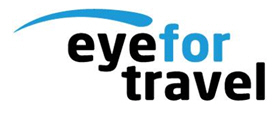  
Back To News/PR Index | 
| Seven Basics for Telling an Authentic, Effective Travel Brand Story | Three travel brands share story-telling techniques with Pamela Whitby | The challenge then is to connect with customers by rising above the background noise. To do that, three brands – Kimpton Hotels & Restaurants, Celebrity Cruises and the Las Vegas Convention and Visitors Authority (LVCVA) – are honing their brand storytelling techniques. 1. Cross channel integration counts Between 2010 and 2014, the time spent on smartphones in the US increased by 394%, according to EyeforTravel’s latest research—a trend that is being mirrored globally. As such, there is no point spending money on a big offline newspaper splash if your mobile presence is non-existent. And, believe it or not, this still happens. “Getting your message out across all channels – digital, social, media and offline – is central to a successful brand story,” says David Brown, AVP Marketing Demand Generation at Celebrity Cruises. Being multichannel does three things:
Says Brown: “Programmatic platforms are becoming more and more effective in social media to better target customers.” 2. Social content should be channel specific At the Las Vegas Convention and Visitors Authority, content is developed for more than seven social media channels, such as Facebook, Vine, YouTube, and Tumblr. That’s down the extremely diverse range of people looking to visit the city. “Each channel allows a different segment of visitors to experience the destination in a different way,” says Caroline Coyle, VP of Brands Strategy at LVCVA. For this reason, it’s really important to keep the content specific to the channel, because not every photo or video is always appropriate. Connor Smith, Senior Director Brand at Kimpton Group Hotels, agrees that social media channels fulfill different needs. He says: “We use social to drive guest love and we do this by showing the more irreverent side of the brand on our social channels.” 3. Professional photography isn’t dead, but UGC has a place At Kimpton, where each hotel is individually designed, positioned and branded—even down to the last detail of the bow tie on the bell man’s uniform—the aim of story telling is to immerse visitors in a visually beautiful experience, both on and offline. For this reason, the brand is a strong advocate of professional photography. Says Smith: “Even among the pros there are good ones and bad ones, so we really making a concerted effort to use pre-approved, pre-trained quality photographers… “Only a ‘pro’ can light a shot in a way that creates that sense of wonder and magic that you can only get when you’re through the door of one of our hotels.” Having said that, Kimpton recognises that carefully selected and curated user-generated content is a useful addition in telling a brand story. Some travel brands are even using geo-fencing technologies that take location into account in order to make crowd-sourced content even more relevant and effective. A note out of Kimpton’s photography style guide would go something like this:
Content can be compelling in a variety of mediums and copy is another way that Kimpton, which likes to position itself as ‘luxury without the attitude’, comes to life. Says Smith: “Although we compete with luxury brands, we don’t take ourselves too seriously.” To achieve this, Smith’s team intentionally balances beautiful photography with quirky or cheeky, witty copy that, he says, you wouldn’t expect to find paired with such sophisticated interiors. 5. Be authentic: operate from the heart Authenticity comes from experience. So when LVCVA tells a story, they approach it entirely from the consumer’s perspective. Says Coyle: “We enable the consumer to put themselves in that particular situation, experiencing the Las Vegas brand promise of adult freedom, through a digital channel. The most important element for us is to frame the content through the lens of the Vegas visitor. When the visitor sees themselves as the hero and imagines themselves in the situation shown in the creative, we receive engagement that is genuine and relatable.” For Kimpton, being authentic is quite simply about using gut instinct to respond in a human way. 6. Colour adds charisma Whether a brand is a fun, luxury, cheeky or slick, colour really does have an impact. TripAdvisor, for example, is associated with green, Virgin with red, Ritz Carlton (and Twitter and Facebook!) with blue. At Kimpton it used to be turquoise, but that traditional palette has now been replaced with a swathe of 20 colours. This is part of a strategy to help the group’s completely unique and different hotels define their own identity. What the hotels are advised to do is to find an accent colour in the image and then identify one that pairs with that particular shade. “That way you pick on subtle colours and bring additional layers of colour into the brand experience,” says Smith. 7. Video: a great conversion tool that doesn’t have to cost the earth Celebrity, Kimpton and LVCVA all use video in branding efforts. At Kimpton, video is used on social media channels like Instagram and Facebook to show the irreverent, human side of this luxury brand. The company says it doesn’t spend a huge amount on glossy videos; rather it is used to show authentic and intimate vignettes of the group’s properties such as:
In Las Vegas, the diversity of video is something that LVCVA continues to explore. Says Coyle: “We have seen growth in popularity of vertical format video, 360-degree video and other experiences that place the consumer in the middle of the video allowing for a completely immersive experience.” Join EyeforTravel in Las Vegas for TDS North America (Oct 19-20) to hear more from the brands mentioned in this article. About
EyeforTravel Ltd.
Established in 1997, by Tim Gunstone, and headquartered in London, we offer a diverse product portfolio including industry analysis, insights, research, webinars, reports, editorial content and conferences. Contact:
|
